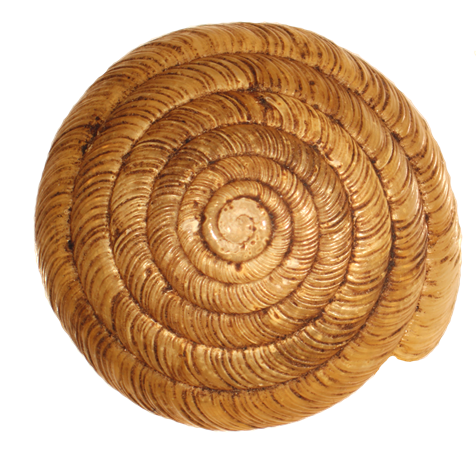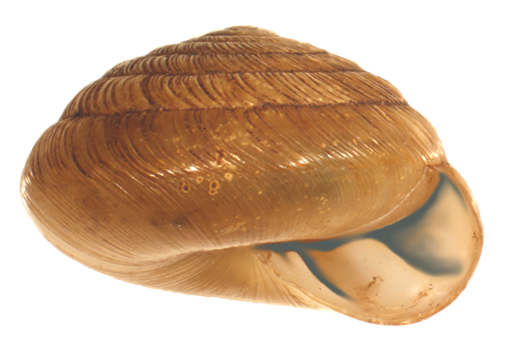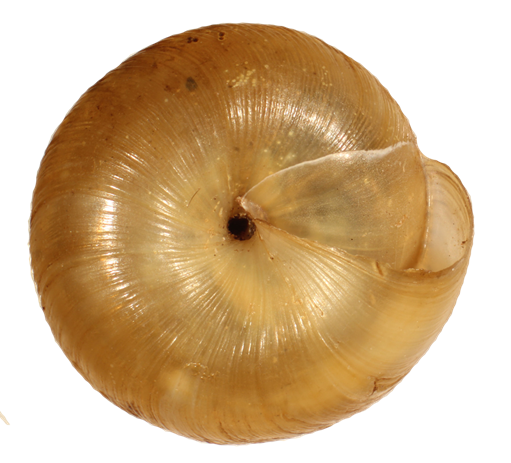Virginia Land Snails
.jpg)



Photo(s): Live Ventridens decussatus by Bill Frank ©, and shell by Dan Dourson ©.
Click photo(s) to enlarge.
Ventridens decussatus (Walker and Pilsbry, 1902)
Family: Gastrodontidae
Common name: Crossed Dome
Identification
Width: 7.8-8.2 mm
Width: 5-6 mm
Whorls: 8
The shell of this animal is a tall dome shape, like some other Ventridens, but the final whorl is angular, making its profile unique. The top of the shell has many close, strong radial striations, while the base is smoother with some traces of spiral striae. The surface of the shell is somewhat dull rather than glossy. The edge of the aperture is thin and is armed with two teeth – one close to the columella and a high, short basal lamella. It can be differentiated from V. collisella by the angled periphery and the somewhat wider umbilicus. The animal is dark above.
Ecology
This species is found at high elevations, usually above 3,000 feet. It lives in leaf litter, particularly oak leaves.
Taxonomy
Synonyms for V. decussatus are Gastrodonta gularis decussate, Ventridens gularis decussate, V. g. decussatus, and Zonitoides (Ventridens) decussatus.
Distribution
Ventridens decussatus is reported from the highlands of Alabama, South Carolina, Tennessee, and North Carolina. Its presence is in Virginia is based upon a single collection in Scott County (S. Roble, pers. comm.).
NatureServe Global Rank: G3
NatureServe State Rank: S1
Virginia’s wildlife action plan: Tier III
Greg Kimber, Ken Hotopp 7/2012



